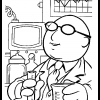Hello, I have a question about microbiological testing of whole, dried herb (berry, root, etc.). I asked a couple of coworkers in our in-house lab, and they had no response. If we have a whole herb, say a whole berry, then wouldn't we want to grind it to a powder for microbiological testing?
It seems to me (and by the way, I have no background in microbiology, other than from my work experience relating to our in-house microbiological testing) that, if we test a whole berry, and we don't grind it to a powder or do some size reduction, then the only surface that the micro test "sees" is the outer surface, and if there are any microorganisms in the interior of the berry, then the test result would potentially be falsely low because it doesn't detect the microorganisms inside the plant part.
There have been a few instances where I thought this was relevant to our test results: For example, we test a whole herb and it meets our micro specifications, then we mill it to a powder and we are surprised that now the powder has a nonconforming micro result. Another example is we test a whole herb and it meets our micro specifications, then we set it in extract (ethanol/water, with the processing including grinding up the herb in a vertical mixer), and then the extract with ~45% alcohol has a high micro result.
Therefore, from what I can tell, both in theory and in practice, we are getting falsely low micro results when we test the whole herb for micro without grinding it up.
I took a glance at ASTA (https://www.astaspic...crobial-safety/) and I didn't see anything on there about this, as far as I could tell.
Is grinding to a powder a recommended practice for microbiological testing of herbs, microbiologically, and are there methods that say that? I want to have a good basis for making a procedural change, if we should do that.
We are certified SQF and NSF GMP in the United States and under 21 CFR Part 111 (dietary supplements) and Part 117.
Thank you,
Matthew
















